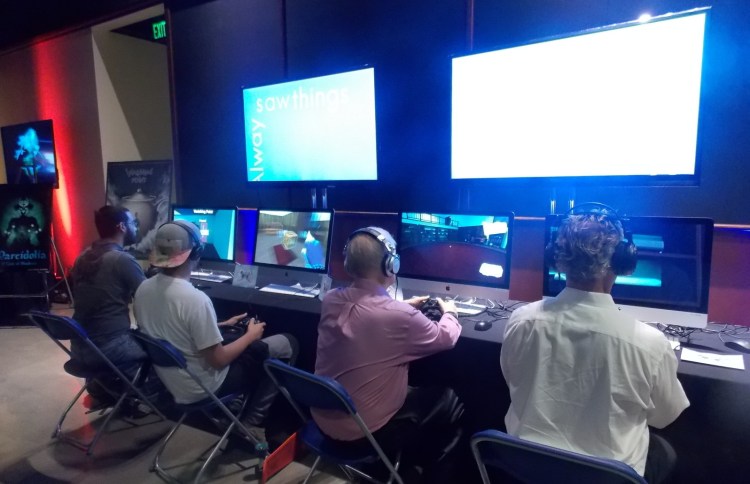It didn’t help that a new feature in Act 2 — where players can stack shadows together to create new objects in the 2D world — was taking up a lot of design and engineering time. So early on, the team decided to shelve Act 2 and just work on improving the prologue and Act 1 as much as possible.
Challenges the team faced
Though the technical foundation for the two-screen experience was mostly solid after the first semester, the engineering work for the rest of the game was still a major hurdle.
“Everything we do in one world has to be reflected in the other world. A lot of one-off code has to go into it, even when we got our architectural base in, our network architecture, and things like that,” said McNamara. “We can get the [3D models] to determine the position of the shadow analogues pretty easily, but it’s when we want these shadow analogues to have a sophisticated interaction with the other shadows — it’s a lot of code.”
Whatever new features the designers came up with had to take into account their effects on both devices, like how touching the 3D fan on the tablet makes it spin faster, thus increasing the wind speed in the 2D world. Everything had to reflect the interdependence between the tablet and the PC.
Plans after graduation
Most of the team is graduating. McNamara encouraged his colleagues to take jobs and not wait around to see if making the rest of Pareidolia will be feasible or not. If development does continue, it’ll be with just a handful of people who’d try to submit the game at festivals. One day, they hope to ramp back up to the level of production needed to finish it.
“Now everyone is trying to figure out ways to pay for rent,” said McNamara. “People are trying to decide whether to take these jobs and whether they should move across the country and stuff like that. We do plan on continuing the game going forward, but day-to-day, the logistics get harder and harder for that to happen.”
VentureBeat's mission is to be a digital town square for technical decision-makers to gain knowledge about transformative enterprise technology and transact. Learn More











